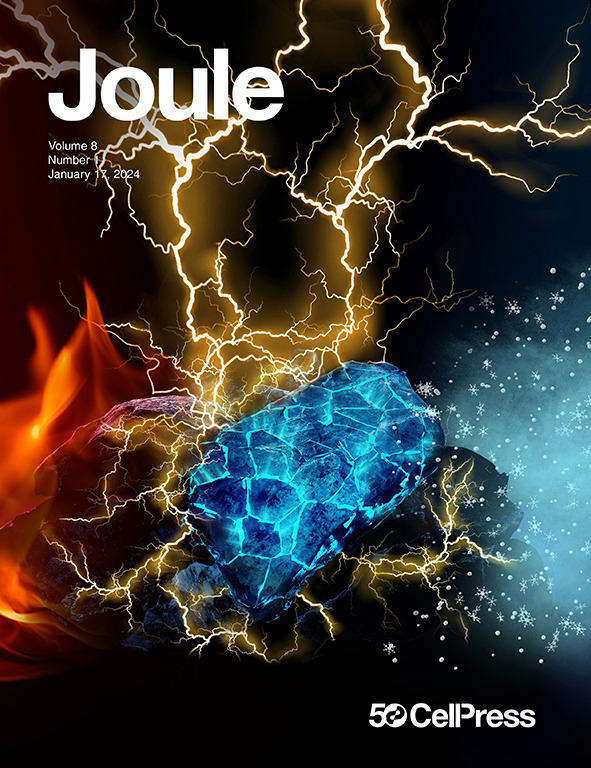Neighboring nonmetal site as an intermediate modulator switching CO2 electroreduction pathway toward multicarbons
IF 35.4
1区 材料科学
Q1 CHEMISTRY, PHYSICAL
引用次数: 0
Abstract
Selective CO2 electroreduction toward multicarbons (C2+) is hampered by the competing pathways at ampere-level current densities. Here, theoretical calculations reveal that the binding strength and protonation of the ∗CO intermediate are a pair of key descriptors in governing the selectivity-determining bifurcation pathway on copper (Cu) catalyst. Hence, we propose an intermediate-modulator strategy with a nonmetallic phosphorus (P)-modified Cu (P-Cu) hetero-site catalyst for ideal C2+ formation. The P site enhances charge accumulation at the neighboring Cu site, which strengthens ∗CO adsorption and active ∗H supply from H2O activation, favoring a rich-∗H-assisted-protonation (RHP) pathway toward ∗CHO formation. Subsequently, the lowest-energy-barrier ∗CO-∗CHO coupling pathway switches the predominant reaction pathway away from undesired CO and H2 to higher-value ethylene and ethanol. We report a C2+ partial current density of 1.05 A cm−2 and a Faradaic efficiency of 87.7%. Utilizing cheaper nonmetallic elements, this catalyst design principle outperforms reported outcomes with precious metal dopants.


邻近非金属位作为中间调制器,将CO2电还原途径转换为多碳
在安培级电流密度下,二氧化碳向多碳(C2+)的选择性电还原受到竞争途径的阻碍。理论计算显示,∗CO 中间体的结合强度和质子化是铜 (Cu) 催化剂上决定选择性分叉途径的一对关键描述因子。因此,我们提出了一种中间体调节器策略,即使用非金属磷(P)修饰的铜(P-Cu)杂化位催化剂来实现理想的 C2+ 生成。P 位点增强了邻近 Cu 位点的电荷积累,从而加强了∗CO 的吸附和 H2O 活化产生的活性∗H 供应,有利于通过富∗H 辅助质子化 (RHP) 途径形成∗CHO。随后,能障最低的 ∗CO-∗CHO 偶联途径将主要反应途径从不感兴趣的 CO 和 H2 转变为价值更高的乙烯和乙醇。我们报告的 C2+ 部分电流密度为 1.05 A cm-2,法拉第效率为 87.7%。利用更廉价的非金属元素,这种催化剂的设计原理优于已报道的使用贵金属掺杂剂的结果。
本文章由计算机程序翻译,如有差异,请以英文原文为准。
求助全文
约1分钟内获得全文
求助全文
来源期刊

Joule
Energy-General Energy
CiteScore
53.10
自引率
2.00%
发文量
198
期刊介绍:
Joule is a sister journal to Cell that focuses on research, analysis, and ideas related to sustainable energy. It aims to address the global challenge of the need for more sustainable energy solutions. Joule is a forward-looking journal that bridges disciplines and scales of energy research. It connects researchers and analysts working on scientific, technical, economic, policy, and social challenges related to sustainable energy. The journal covers a wide range of energy research, from fundamental laboratory studies on energy conversion and storage to global-level analysis. Joule aims to highlight and amplify the implications, challenges, and opportunities of novel energy research for different groups in the field.
 求助内容:
求助内容: 应助结果提醒方式:
应助结果提醒方式:


